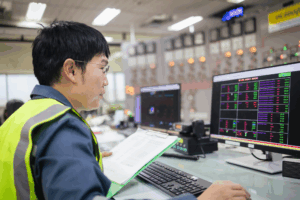
Training your employees to survive an active shooter situation
While it’s easy to have an “it can never happen to me” outlook about an active shooter situation at your facility, it’s something you should be prepared for because these tragic events can happen at any workplace. Reports compiled by the Federal Bureau of Investigation (FBI) show that previous active shooter events have taken place in commerce, education, health care, government, and houses of worship environments. The FBI designated 24 shootings in 2024 as active shooter incidents.
The FBI defines an active shooter as someone “actively engaged in killing or attempting to kill people in a confined and populated area.” Active shooter incidents are unpredictable, evolve quickly, and often end within 10 to 15 minutes. That’s sometimes faster than emergency personnel can get there, so it’s vital for you to provide your employees with active shooter preparedness training so they can respond appropriately if this unfortunate situation occurs at your workplace.
Training requirements
There’s no federal requirement for employers to train employees on active shooter preparedness, but some states, including California and New York, have adopted workplace violence prevention requirements, and active shooter preparedness may be part of that training. Because requirements vary across states, employers should review their state OSHA program or labor department guidance to determine what applies to their workplace.
Training should be conducted by a person who is knowledgeable about active shooter preparedness and is familiar with your organization’s workplace violence prevention program (if applicable) and security and emergency procedures. Trainers may use table-top exercises, classroom training, and/or online training. Initial training should take place during onboarding, and be refreshed annually. Because the subject matter can be emotionally difficult, employees should be informed about the content in advance.
Training program elements
Active shooter preparedness training should include the following elements: behavioral indicators and motivations, gunfire recognition, workplace security measures, emergency action plans (EAPs), and law enforcement interaction.
Behavioral indicators and motivations
Although there’s no active shooter profile, indicators include behavior that may suggest paranoia, empathy toward individuals who commit violence or talk of previous acts of violence, and an increase in unsolicited comments about firearms and violent crimes. Reports by the FBI show that in many active shooter incidents, the perpetrator has a known connection to at least one victim or the targeted location. This underscores the importance of early intervention. Employees should alert their supervisor immediately if they believe an individual exhibits peculiar or potentially violent behavior. Employees should also report any active shooter threats.
Gunfire recognition
The sound of gunfire is a sharp, loud, and sudden noise. The tone of gunfire ranges from high-pitched pistols, which sound like a popping balloon, to larger-caliber rifles that have more of a “boom” sound, like thunder or fireworks. Survivors of active shooter events often report that they heard a loud noise but thought it was some other commonly heard noise. Employees should be instructed never to go toward the direction of the noise to determine the source.
Workplace security measures
Your employees should be aware of and use your facility’s access control systems, such as identification badges, visitor logs, and locked entry points, as well as surveillance systems, alarms, panic buttons, and/or silent alert systems.
Emergency action plan (EAP)
Employees should be trained in your organization’s EAP, which includes site-specific procedures and floor plans, roles and responsibilities during an emergency, evacuation routes and lockdown protocols, and a communication plan. It’s essential that every employee knows the exit and route closest to where they usually work, as well as an alternate exit and route out of the building.
Law enforcement interaction
When law enforcement arrives, their primary goal is to stop the active shooter(s). The faster they can do this, the more lives can be saved, so employees must cooperate with any instructions they give. In general, employees should remain calm, avoid sudden movements, and always keep their hands visible.
Response methods
The key element of active shooter preparedness training is recognizing the appropriate response when gunshots are heard and/or when employees are made aware there’s an active shooter situation in the workplace. When training employees on response methods, you must consider your employees’ physical abilities, your facility’s layout and design, and any industry-specific risks. Both the FBI and the Department of Homeland Security (DHS) advise employers to educate their teams on the run, hide, fight approach. While this method generally follows a sequence, the right response will vary depending on the situation and the individual’s circumstances. Learn more by reading Responding to an active shooter in the workplace.
Drills
To ensure the effectiveness of your training program, it’s recommended that you put it into practice and conduct active shooter drills. Drills help reinforce learned response actions and identify gaps in procedures, communication, or facility layout. Local law enforcement is an excellent resource in designing and executing training drills. Employees must be informed about what to expect before any drill, especially if it involves a full-scale simulation, to minimize distress and ensure psychological safety.
Active shooter preparedness is a critical part of any workplace safety program. By providing clear training, reinforcing emergency procedures, and encouraging early reporting of concerning behavior, you give your employees the tools to respond decisively in a crisis. While these events are rare, readiness can make the difference between chaos and control, and between lives lost and lives protected.




